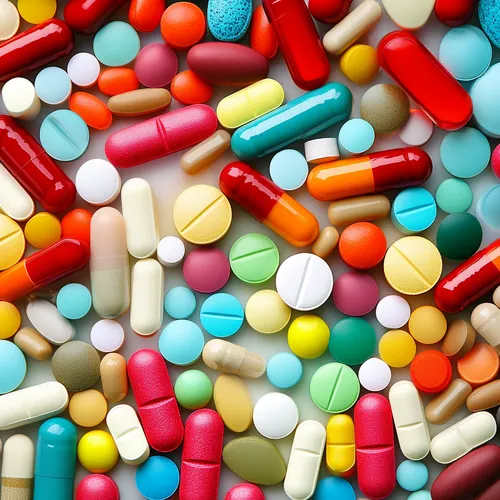Drugs of abuse are generally grouped into three different classifications, based on similarities that those drugs share. However, drugs that are in the same group can also be quite different in the way they work.
Just to confuse the issue, certain drugs will change their characteristics when used in larger quantities. This means that they can fall under different groups at different times. An example of this is cannabis. This drug is generally considered to be a depressant. However, the drug can act as a hallucinogen when taken in large enough doses.
Stimulants
These types of drugs stimulate the central nervous system and the brain, increasing the speed of communication between the two. Increased physical activity and alertness are common effects of stimulant drugs such as amphetamines (speed), cocaine, and inhalants like amyl or butyl nitrites. Many people take stimulants to feel happy and to decrease appetite.
Legal stimulants include drugs such as coffee, which people can soon develop an addiction to and find hard to give up, suffering withdrawal symptoms when they try to stop drinking it.
There are several types of depressants, including benzodiazepines, barbiturates, and alcohol. Benzodiazepines are commonly prescribed for anxiety and insomnia, while barbiturates are used for anaesthesia and seizure control. Alcohol is a legal depressant that is widely consumed, but excessive use can have harmful effects on the body and mind.
It’s important to use depressants only as prescribed by a medical professional and to avoid mixing with other substances. Misuse of depressants can have serious health consequences and even be life-threatening. If you or someone you know is struggling with addiction to depressants, seek help from a healthcare provider or addiction specialist.
Stimulant use can be easily detected by the use of drug testing kits. For example, cocaine drug testing kits can detect recent use of the drug through urine or saliva.
Depressants
Depressants operate in a totally different way to stimulants. Activity between the central nervous system and the brain is decreased, slowing down the messages between the two. In medical situations, they can relax muscles and calm nerves. Prescription depressants are often used to help individuals with sleeping disorders such as insomnia.
There are several types of depressants, including benzodiazepines, barbiturates, and alcohol. Benzodiazepines are commonly prescribed for anxiety and insomnia, while barbiturates are used for anaesthesia and seizure control. Alcohol is a legal depressant that is widely consumed, but excessive use can have harmful effects on the body and mind.
It’s important to use depressants only as prescribed by a medical professional and to avoid mixing with other substances. Misuse of depressants can have serious health consequences and even be life-threatening. If you or someone you know is struggling with addiction to depressants, seek help from a healthcare provider or addiction specialist.
Hallucinogens
These types of drugs are sometimes referred to as “mind-altering” or “mind-expanding” drugs. Hallucinogens radically distort a user’s perception of reality by interfering with the brain and central nervous system. Vivid hallucinations are experienced by people that take these type of drugs. Hallucinogens can make users see and hear things that aren’t really there and make things look really strange.
In addition to visual and auditory hallucinations, hallucinogens can also cause a range of other effects. Users may experience changes in their sense of time, space, and identity. The sense of self can become distorted, leading to feelings of detachment or even ego death. This can be a frightening and disorienting experience for some users, but others find it liberating and enlightening.
However, despite the possible benefits that some users may experience, the use of hallucinogens can also have negative consequences. These drugs can cause intense anxiety, paranoia, and panic attacks. In some cases, users may even experience flashbacks or long-term psychological effects.
Because of the potential risks associated with hallucinogens, their use is generally not recommended. If you or a loved one is struggling with drug addiction, it is important to seek help from a medical professional or addiction specialist. There are many different treatment options available, and with the right support, it is possible to overcome addiction and regain control of your life.
The Dangers of Polydrug Use
Mixing different drug categories can be incredibly risky. When stimulants and depressants are combined, they don’t cancel each other out – instead, they compete for control of your body’s systems. This unpredictable interaction can overwhelm your heart, breathing, and brain function.
For instance, mixing cocaine (a stimulant) with heroin (a depressant) – known as a “speedball” – is notoriously dangerous. The stimulant wears off faster, potentially leading to a fatal overdose when the depressant’s full effects kick in.
Hallucinogens thrown into the mix further complicate things. They can intensify the effects of other drugs in ways that are hard to predict or control. A “bad trip” becomes much more likely when hallucinogens are combined with stimulants or depressants.
Remember: drug categories aren’t just academic distinctions. They reflect real differences in how substances affect your body. Mixing drugs from different categories multiplies the risks exponentially. If you’re struggling with substance use, reach out for help – there are always safer alternatives.
Photo Credit: Anthony for Zoom Testing
Zoom Testing is a leading UK drug testing company and a supplier of Drug Test Kits.
This post was originally published in 2015. It was last updated September 2024.





